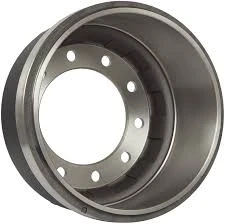
-
 Afrikaans
Afrikaans -
 Albanian
Albanian -
 Amharic
Amharic -
 Arabic
Arabic -
 Armenian
Armenian -
 Azerbaijani
Azerbaijani -
 Basque
Basque -
 Belarusian
Belarusian -
 Bengali
Bengali -
 Bosnian
Bosnian -
 Bulgarian
Bulgarian -
 Catalan
Catalan -
 Cebuano
Cebuano -
 Corsican
Corsican -
 Croatian
Croatian -
 Czech
Czech -
 Danish
Danish -
 Dutch
Dutch -
 ئىنگىلىزچە
ئىنگىلىزچە -
 Esperanto
Esperanto -
 Estonian
Estonian -
 Finnish
Finnish -
 French
French -
 Frisian
Frisian -
 Galician
Galician -
 Georgian
Georgian -
 German
German -
 Greek
Greek -
 Gujarati
Gujarati -
 Haitian Creole
Haitian Creole -
 hausa
hausa -
 hawaiian
hawaiian -
 Hebrew
Hebrew -
 Hindi
Hindi -
 Miao
Miao -
 Hungarian
Hungarian -
 Icelandic
Icelandic -
 igbo
igbo -
 Indonesian
Indonesian -
 irish
irish -
 Italian
Italian -
 Japanese
Japanese -
 Javanese
Javanese -
 Kannada
Kannada -
 kazakh
kazakh -
 Khmer
Khmer -
 Rwandese
Rwandese -
 Korean
Korean -
 Kurdish
Kurdish -
 Kyrgyz
Kyrgyz -
 Lao
Lao -
 Latin
Latin -
 Latvian
Latvian -
 Lithuanian
Lithuanian -
 Luxembourgish
Luxembourgish -
 Macedonian
Macedonian -
 Malgashi
Malgashi -
 Malay
Malay -
 Malayalam
Malayalam -
 Maltese
Maltese -
 Maori
Maori -
 Marathi
Marathi -
 Mongolian
Mongolian -
 Myanmar
Myanmar -
 Nepali
Nepali -
 Norwegian
Norwegian -
 Norwegian
Norwegian -
 Occitan
Occitan -
 Pashto
Pashto -
 Persian
Persian -
 Polish
Polish -
 Portuguese
Portuguese -
 Punjabi
Punjabi -
 Romanian
Romanian -
 Russian
Russian -
 Samoan
Samoan -
 Scottish Gaelic
Scottish Gaelic -
 Serbian
Serbian -
 Sesotho
Sesotho -
 Shona
Shona -
 Sindhi
Sindhi -
 Sinhala
Sinhala -
 Slovak
Slovak -
 Slovenian
Slovenian -
 Somali
Somali -
 Spanish
Spanish -
 Sundanese
Sundanese -
 Swahili
Swahili -
 Swedish
Swedish -
 Tagalog
Tagalog -
 Tajik
Tajik -
 Tamil
Tamil -
 Tatar
Tatar -
 Telugu
Telugu -
 Thai
Thai -
 Turkish
Turkish -
 Turkmen
Turkmen -
 Ukrainian
Ukrainian -
 Urdu
Urdu -
 Uighur
Uighur -
 Uzbek
Uzbek -
 Vietnamese
Vietnamese -
 Welsh
Welsh -
 Bantu
Bantu -
 Yiddish
Yiddish -
 Yoruba
Yoruba -
 Zulu
Zulu
A Visual Guide to Understanding the Appearance of Drum Brakes
What Do Drum Brakes Look Like?
When discussing vehicle braking systems, the two main types are disc brakes and drum brakes. While many modern vehicles predominantly use disc brakes for their superior performance, drum brakes are still widely used in various applications, especially in older vehicles and some budget-friendly models. Understanding what drum brakes look like can help in recognizing their components and appreciating how they function.
Basic Structure of Drum Brakes
Drum brakes consist of several key components that work together to provide effective braking power. The most noticeable part of a drum brake system is the brake drum itself, which is typically round and made of cast iron or aluminum. The drum is mounted on the wheel hub and spins along with the wheel when the car is in motion. The outer surface of the drum is roughened to provide better friction with the brake shoes.
Inside the drum, you’ll find the brake shoes. These are curved pieces made of steel and covered with a friction material, which can be similar to that used on disc brakes. When the driver presses the brake pedal, hydraulic fluid forces the brake shoes outward against the inner surface of the drum. The resulting friction slows down or stops the vehicle. This design allows for a compact and efficient braking system, especially beneficial for the rear wheels where high-performance braking is less critical.
Components of Drum Brakes
Aside from the drum and the brake shoes, several other components are essential to the functioning of drum brakes. Wheel cylinders are hydraulic components that push the brake shoes outward when the brakes are applied. These cylinders are typically located at the top or bottom of the drum, providing even force distribution to the brake shoes.
what do drum brakes look like

Return springs are another crucial part of the drum brake system. They keep the brake shoes retracted when the brakes are not engaged, allowing for smooth wheel rotation. Without these springs, the shoes would drag against the drum, causing excessive wear and reduced fuel efficiency.
Furthermore, adjusters are often included in the drum brake system to maintain the proper distance between the brake shoes and the drum. As the friction material wears down over time, these adjusters automatically compensate to ensure consistent braking performance.
Visual Characteristics
Visually, drum brakes are distinguishable by their circular shape and bulkiness compared to disc brakes. A typical drum brake will feature a smooth, shiny exterior, which can often be seen through the wheel spokes of a vehicle. The inside of the drum is generally darker and may have visible wear marks where the brake shoes make contact.
In cross-section views, you can observe the arrangement of the brake shoes and the wheel cylinder, providing insight into how force is applied. When inspecting the drum brakes of a vehicle, you may notice the brake shoes are slightly wider than the drum’s inner diameter, which is essential for effective contact during braking.
Conclusion
In summary, drum brakes are characterized by their rounded, metallic design featuring a brake drum and brake shoes that expand outward to create friction for stopping a vehicle. Though less common in newer vehicles, drum brakes remain a vital component in many cars and are recognized for their reliable and cost-effective performance. Understanding their structure and function gives drivers a better appreciation of the technology behind everyday vehicle safety.
-
Why Choosing the Right Brake Drum Manufacturer Matters for Vehicle Safety and PerformanceخەۋەرلەرJun.05,2025
-
Understanding Heavy Duty Brake Drums: Key to Truck Safety and PerformanceخەۋەرلەرJun.05,2025
-
Reliable Braking Systems: Rear and Trailer Drum Brake Solutions for Heavy-Duty ApplicationsخەۋەرلەرJun.05,2025
-
Power and Precision: Why Brake Drums Still Dominate in Vehicle Safety SystemsخەۋەرلەرJun.05,2025
-
Brake Drums: Essential Components for Vehicle Safety and PerformanceخەۋەرلەرJun.05,2025
-
Superior Brake Drums & Rotors for Reliable Stopping PowerخەۋەرلەرJun.03,2025
-
Premium Brake Drums for Maximum Stopping PowerخەۋەرلەرJun.03,2025
